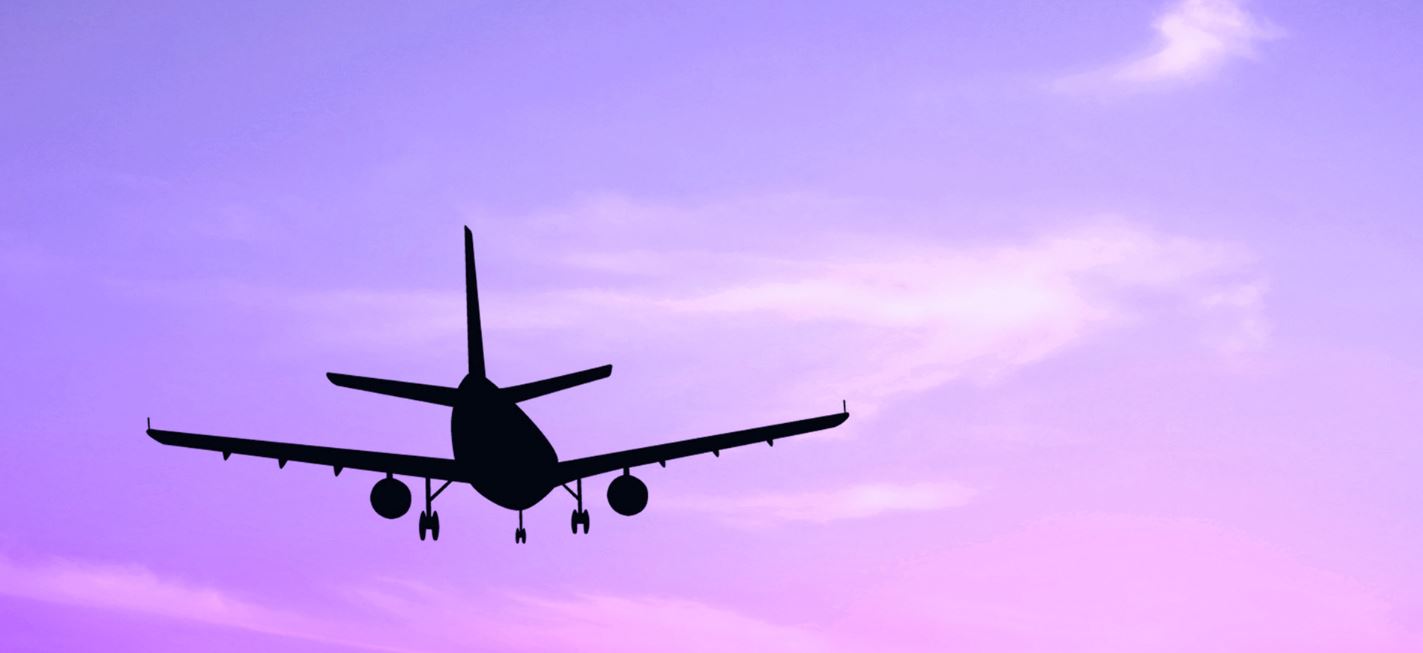Aviation accidents, whether they involve commercial airlines, private planes, or helicopters, can result in devastating injuries and complex legal claims. Victims and their families often have numerous questions about their rights, the legal process, and how an attorney can help.
At Kherkher Garcia, we want to help families affected by tragedies understand and protect their rights. This FAQ guide will address some of the most common questions related to aviation injuries. Anyone with questions about an aviation injury can contact us directly to speak with one of our aviation injury attorneys.
Recent Aviation Incidents Raising Questions of Safety
Recent aviation incidents have raised concerns about air travel safety. Here is a summary of some notable events:
Jet Rescue Air Ambulance Crash in Northeast Philadelphia, PA
On January 31, 2025, a Learjet 55 operated by Jet Rescue Air Ambulance crashed shortly after takeoff from Northeast Philadelphia Airport, resulting in the deaths of all six individuals on board and one person on the ground. The aircraft was en route to Tijuana International Airport, with a planned refueling stop at Springfield–Branson National Airport. The passengers included an 11-year-old patient, her mother, and four crew members, all Mexican nationals. The National Transportation Safety Board (NTSB) and the Federal Aviation Administration (FAA) are investigating the incident.
Mid-Air Collision over Washington, D.C.
On January 29, 2025, an American Airlines regional jet collided with a U.S. Army Black Hawk helicopter over the Potomac River near Ronald Reagan Washington National Airport. All 67 individuals aboard both aircraft perished. Preliminary findings suggest the helicopter was flying above its authorized altitude, contributing to the accident. The National Transportation Safety Board (NTSB) is investigating the incident.
Ground Collision at Chicago O’Hare International Airport
On February 2, 2025, a United Airlines employee sustained severe injuries when an American Eagle Bombardier CRJ-200 aircraft collided with a ground tug at Chicago’s O’Hare International Airport. The tug overturned upon impact, trapping the 64-year-old driver beneath. He was transported to the hospital in critical condition. All passengers on the flight, which had arrived from Kalamazoo/Battle Creek International Airport, disembarked safely.
Jeju Air Incident in South Korea
On December 29, 2024, a Jeju Air Boeing 737-800 attempted a gear-up landing at Muan International Airport in South Korea. The aircraft sustained significant damage, but there were no reported injuries among the passengers and crew. Investigations are ongoing to determine the cause of the landing gear malfunction.
Kamaka Air Crash in Honolulu
On December 17, 2024, Kamaka Air Flight 689, a single-engine Cessna 208, crashed into a vacant building shortly after takeoff from Honolulu International Airport. The aircraft was en route to Lanai Airport. Both individuals on board were injured. The Federal Aviation Administration (FAA) and the NTSB are conducting investigations to ascertain the cause of the crash.
These incidents underscore the importance of rigorous safety protocols and continuous monitoring in aviation operations.
What Are the Most Common Causes of Aviation Injuries?
Aviation injuries can occur due to various factors, including:
- Pilot Error: Mistakes made by the pilot, such as misjudging weather conditions or failing to follow proper procedures, are a leading cause of aviation accidents.
- Mechanical Failures: Defective parts, improper maintenance, or manufacturing defects can cause aircraft malfunctions that lead to crashes or in-flight injuries.
- Turbulence: Severe turbulence can result in passengers being thrown around the cabin, leading to head injuries, fractures, or concussions.
- Airport Negligence: Poor airport maintenance, defective equipment, or negligent ground crew operations can lead to accidents during boarding, disembarking, or baggage handling.
- Inadequate Security Measures: Security breaches or poor enforcement of safety regulations can increase the risk of injuries from in-flight violence or other security-related incidents.
- Weather Conditions: Poor visibility, strong winds, and severe storms can impact a pilot’s ability to safely navigate and land the aircraft.
Who Can Be Held Liable for an Aviation Injury?
Liability for an aviation injury depends on the circumstances of the accident. Possible liable parties may include:
- Airlines: If an airline fails to follow safety protocols, neglects maintenance, or employs unqualified pilots, it may be held responsible for an aviation injury.
- Aircraft Manufacturers: If a design or manufacturing defect causes an accident, the aircraft manufacturer or parts supplier may be liable.
- Pilots and Crew Members: If pilot negligence or improper crew behavior leads to an injury, they may be held accountable.
- Airport Operators: Poorly maintained runways, faulty airport equipment, or negligent airport staff can contribute to aviation injuries.
- Government Entities: The Federal Aviation Administration (FAA) or other regulatory bodies may be partially liable if their oversight failures contribute to an accident.
What Types of Injuries Can Occur in Aviation Accidents?
Aviation accidents can result in a wide range of injuries, including:
- Traumatic Brain Injuries (TBI): Impact from turbulence or crash landings can cause concussions or more severe brain damage.
- Spinal Cord Injuries: Hard landings, seatbelt injuries, or falling objects in the cabin can lead to spinal injuries, potentially causing paralysis.
- Burn Injuries: Aircraft fires or explosions may result in severe burns requiring long-term medical treatment.
- Broken Bones and Fractures: Sudden impact or turbulence can cause broken bones, particularly in the limbs and ribs.
- Psychological Trauma: Survivors of aviation accidents may suffer from post-traumatic stress disorder (PTSD), anxiety, and emotional distress.
What Should I Do If I Am Injured in an Aviation Accident?
If you suffer an injury in an aviation accident, take the following steps:
- Seek Medical Attention: Even if you feel fine, injuries may not be immediately apparent. Obtain a medical evaluation as soon as possible.
- Report the Incident: Notify the airline, airport, or appropriate authorities about the accident.
- Document the Evidence: Take photos of your injuries, the accident scene, and any relevant details.
- Obtain Witness Information: Collect contact information from fellow passengers, crew members, or airport personnel who witnessed the incident.
- Consult an Aviation Injury Attorney: An experienced attorney can help you determine your legal options and pursue a claim for compensation.
What Compensation Can I Recover for an Aviation Injury?
Victims of aviation injuries may be entitled to compensation for:
- Medical Expenses: Coverage for hospital bills, surgeries, rehabilitation, and future medical care.
- Lost Wages: Reimbursement for time missed from work due to the injury.
- Pain and Suffering: Compensation for physical pain, emotional distress, and diminished quality of life.
- Disability and Long-Term Care: If the injury results in permanent disability, victims may receive compensation for long-term care and assistive devices.
- Wrongful Death Damages: If a loved one is killed in an aviation accident, surviving family members may pursue compensation for funeral costs, lost income, and emotional suffering.
How Long Do I Have to File an Aviation Injury Lawsuit?
The statute of limitations for filing an aviation injury lawsuit varies by state and jurisdiction. In general:
- Personal Injury Claims: Victims typically have between one to three years to file a claim, depending on state laws.
- Wrongful Death Claims: Families of deceased victims usually have two years to pursue compensation.
- Claims Against Government Entities: If a government agency is involved, the deadline may be shorter, often requiring notice within six months of the incident.
It is crucial to consult an attorney as soon as possible to ensure your claim is filed within the appropriate time frame.
Do I Need an Attorney for an Aviation Injury Claim?
Yes. Aviation injury cases are complex, involving federal regulations, industry standards, and multiple liable parties. A skilled aviation injury attorney can:
- Investigate the Cause of the Accident: Work with aviation experts to determine liability.
- Handle Negotiations: Deal with insurance companies, airlines, and manufacturers on your behalf.
- File a Lawsuit: If a fair settlement cannot be reached, an attorney can represent you in court.
- Maximize Compensation: Ensure you receive the full amount of damages you are entitled to.
How Can Kherkher Garcia Help?
At Kherkher Garcia, our experienced aviation injury attorneys are dedicated to protecting the rights of injury victims and their families. We have a proven track record of successfully handling complex aviation accident cases and securing substantial compensation for our clients.
If you or a loved one has suffered an aviation-related injury, contact Kherkher Garcia today for a free consultation. We will evaluate your case, explain your legal options, and fight to ensure you receive the justice and compensation you deserve. Call us today at 713-333-1030, or fill out our online contact form to schedule your free consultation.
Resources:


